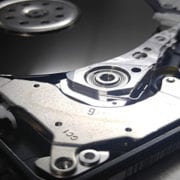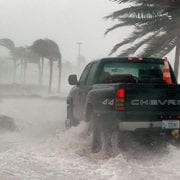
Disaster Planning Tips to Survive Floods, Fires, and Human Errors
Uh oh… what happens when a disaster hits that flips your world upside down? Your office is destroyed, your technology is destroyed, your hope is destroyed…
No, wait, it doesn’t have to be. It doesn’t even have to be that dramatic, it could be just a simple human error. Either way, you know what you should do in a situation when your technology is down? You execute your backup plan, that’s what!
Whether it be a flood, fire, earthquake, hurricane, or human error, you need to have a plan. Go through disaster planning and educate yourself on these disasters and backup plans NOW, before they happen. It’s always better to be safe and take a proactive approach, not reactive.
To start out, educate yourself on what kinds of disasters could hit you. We began this blog post with the most dramatic ones, but some of these errors could simply be that one of your workers wasn’t looking and knocked over a server. Or spilled coffee on it. Either way, the better you understand the disaster, the better you can prepare to protect your infrastructure.
Next, keep a running inventory of all of your IT equipment and technology to know what to restore if certain parts need replacing. As you are doing this, you should also implement off-site data backups. That way, if a fire, flood, theft, or coffee accident affects your business, you can rest easy knowing that all of your documents and data are backed-up elsewhere in a safe place, such as the cloud, for example.
The next part of disaster planning is to formulate a business continuity plan. In the example of Hurricane Katrina or Hurricane Sandy, “those that were able to maintain operations via mobile phone, laptop, or even good old-fashioned handshakes were the ones that saw their reputations as pillars of the community strengthen in the wake of those devastating storms.”
Once you know about all the possible disasters and have a plan prepared, test it out! Testing everything out in advance is very important, because that way, you can see how quickly you can retrieve information and get everything back up and running. You can also fix any loop or error in the plan during this test run to make sure you have the best solution possible planned out.
So, are you convinced yet that you need a backup plan in the case of a disaster? Great! Don’t know where to start though? No worries. You can begin by downloading the Readiness and Disaster Recovery Checklists (simply click the buttons below). You can also give us a call and we’ll help you out! Our disaster recovery experts can help guide you through the tricky technology, one step at a time, and teach you all the tricks of the trade. This stuff is important, so you need to get it right.
Don’t waste another minute; contact your trusted managed services provider to hash out that plan.











